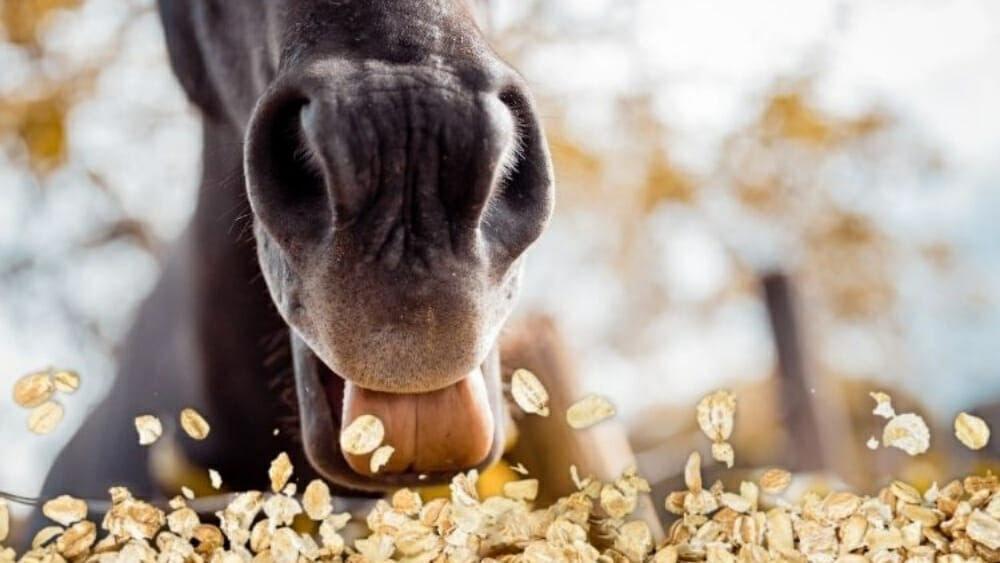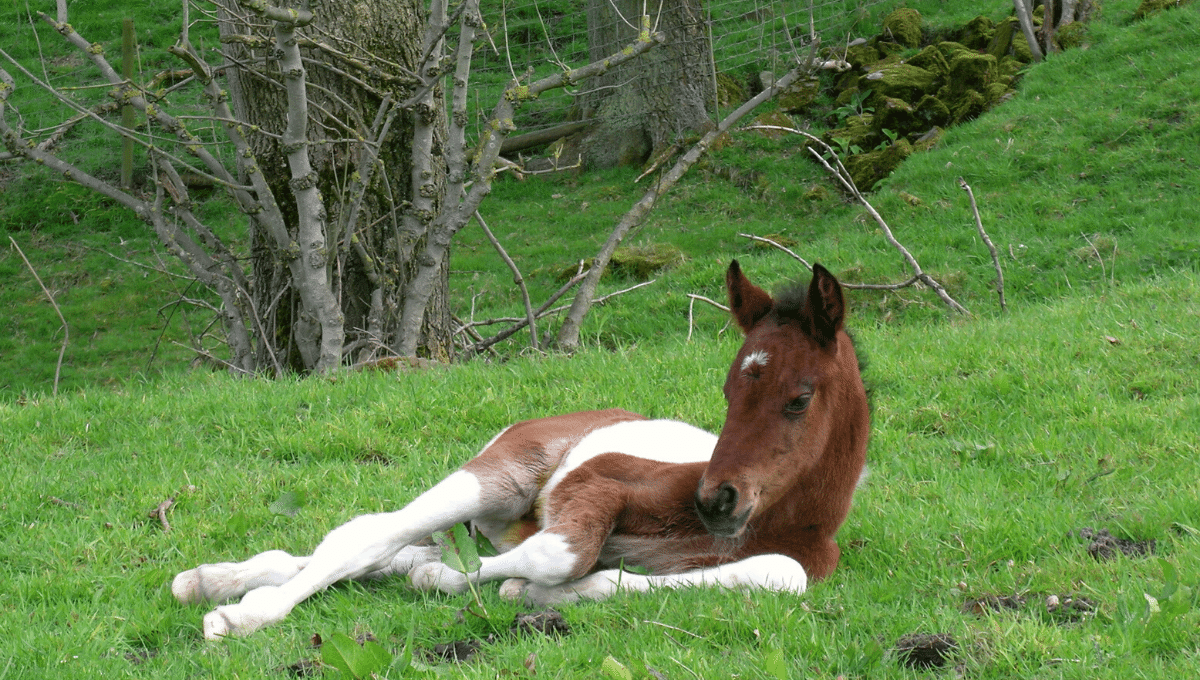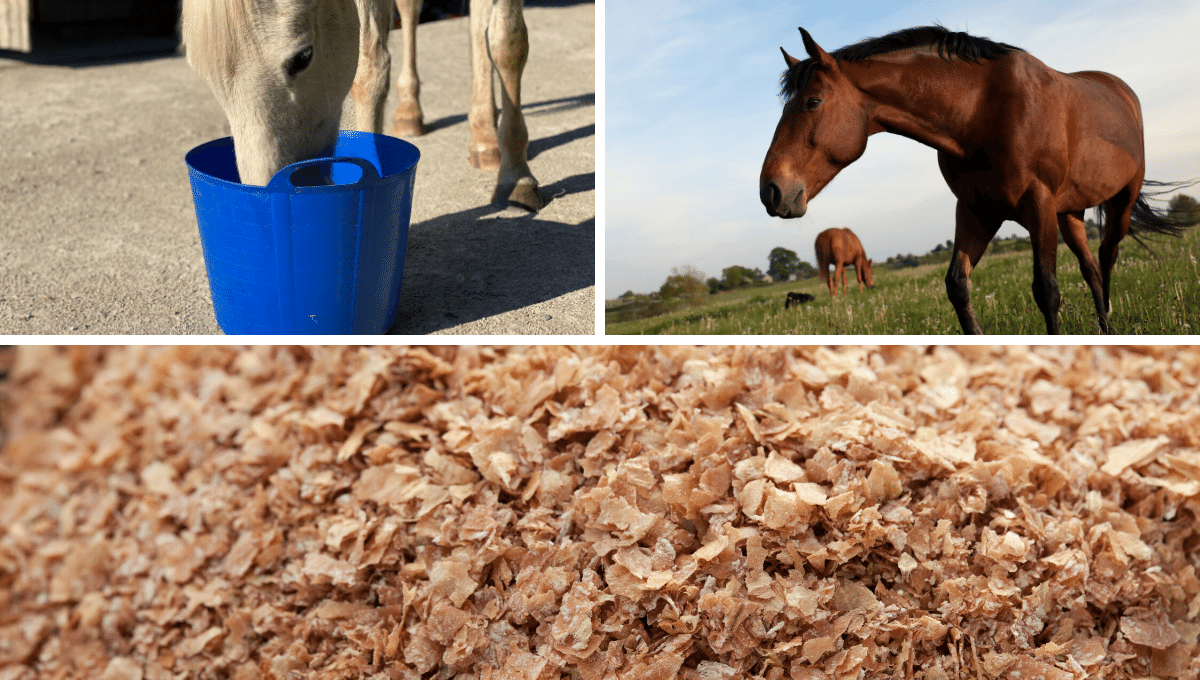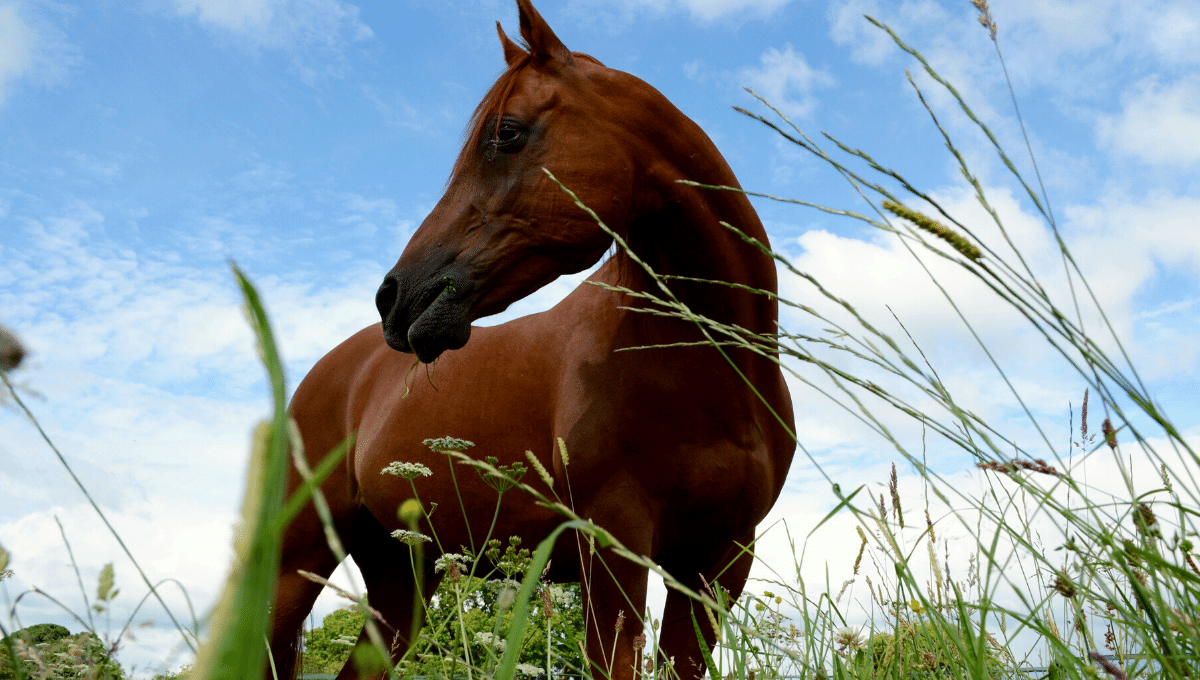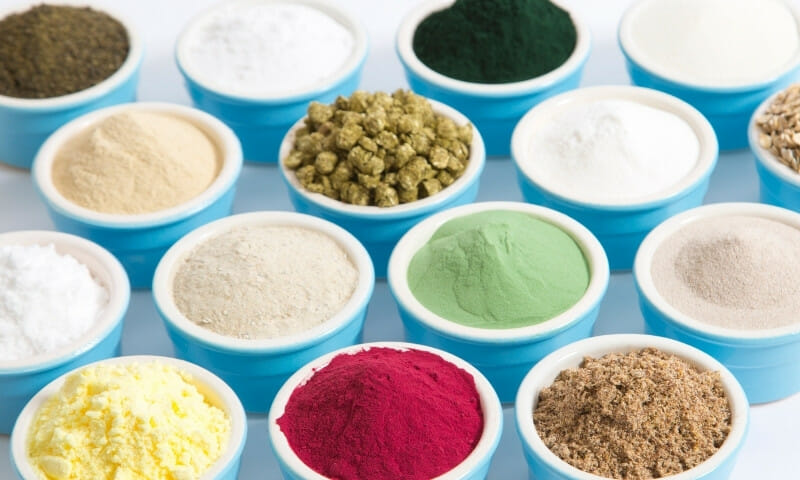In this article, we are going to look at the various types and forms of oats for horses and which we feel is the best to feed to your horse or pony.
We will be looking into the nutritional values, along with some of the pros and cons of the different types of oats and when is the best time and way to feed oats to horses.
What are Oats for Horses?
Most oats fed to horses are whole, meaning each kernel is encased in a hull or fibrous sheath. Because the inside of the oat is the nutritious part, oats are frequently subjected to processing, typically rolling or crimping, which cracks the hulls and renders them more digestible as they pass through the digestive system, thereby increasing their digestible energy. Hulls constitute a considerable portion of the grain, between 23 and 35% depending on the variety, and are usually over 30% crude fibre. Because of their high fibre content and lower starch value in comparison to maize and barley, whole oats have traditionally been a relatively safe feed for horses as long as they are not EMS or lamintic.
This research paper (Beauchesne, 2002) discusses the benefits and limitations of feeding oats to horses, emphasizing oats as a safe grain choice due to their lower starch content and higher digestibility compared to other grains. It also covers the nutritional differences between hulled and hulless oats.
What types of horse oats, such as rolled oats, can I feed to horses?
- Whole oats: These are as they come from the field, complete with the husks (or outer casing). This means they have the highest fibre level of all oats and grains. However, very young horses or veterans with teeth problems may have difficulty chewing these, so will not get the full nutritional benefit. These oats are best soaked overnight before feeding. Some people will sprout this type of oat.
- Bruised oats: The husk of the oat is mechanically broken to allow the digestive enzymes access to the nutrients and aid better digestibility.
- Rolled oats: Rolling has a similar effect to bruising. The past horse owners would buy whole oats and roll them on an ad hoc basis to maximise storage time.
- Crimped oats: This process damages the husk and increases the surface area, so the digestive juices can get to work more effectively.
- Clipped oats: Oats are often clipped alongside bruising. The ends of the grain are trimmed to give a neater final product.
- Crushed oats: This is a rougher process, which involves breaking both the husk and the kernel of the oat. This makes them slightly more digestible, but they suffer from a short shelf life.
- Naked oats: These are grown to have loose husks that are shed when harvested. This lowers the fibre content and increases digestibility. In addition, they have a third more digestible energy and protein than a standard oat, plus they are high in oil.
- Flaked, naked micronised oats: These are commonly called porridge oats when bought as human food. Micronisation (heat and pressure treatment) enhances the digestibility of oats, making their starch content easier for the horse to process in the small intestine. This form of oats for horses does not contain the husk so they supply more energy per 100 grams fed and also enhanced nutrient availability. These are the oats Forageplus advises to use in equal amounts with a high-fibre feed such as beet pulp or grass or hay pellets.
Should horses eat the oat husk?
The husk of the oat is the outer covering of the seed. Horses can digest the husk (or hull) of oats, but the digestibility and nutritional value of the husk are relatively low compared to the grain inside. The husk of oats is high in indigestible lignin and cellulose. Usually, when horses are fed oats with the husk, much of the husk remains undigested and simply adds bulk to the diet and dilutes the overall quality of the bucket feed. You as the owner will be paying for a part of the oat which effectively passes through the horse and out the other end undigested.
Some horse owners may be hesitant to feed hull-less oats because they believe the hulls contribute significantly to the fibre intake of horses.
A disadvantage of feeding the husk is this is the portion of the oat which is the least clean. Unless oats are organic then they will have been sprayed with a variety of pesticides and fungicides. It makes sense then to remove this unclean portion of the food from the horse’s diet and feed only the clean inside part for the clean nutritional benefit it provides.
Horses with dental problems and older horses may struggle to chew whole oats adequately, meaning the husk could pass through undigested. Processed oats (rolled or micronised) are better for such horses.
Eliminating the husk in the bucket feed allows for a more precise and clean nutrient balance. There are better and cleaner fibre sources to feed with the oat such as grass pellets, hay pellets or sugar beet.
Benefits and Uses of Oats for Horses
Oats are a nutritious and versatile feed for horses, offering several benefits and uses. Here are some of the key advantages of feeding oats to horses:
- Low in Starch: Compared to other grains, oats are relatively low in starch. This makes them a good choice for horses that are prone to digestive issues or have sensitive stomachs especially when they are fed with beet pulp. Lower starch levels mean oats are less likely to cause spikes in blood sugar, which can lead to behavioural issues and metabolic problems.
- Rich in Nutrients: Oats are packed with essential nutrients such as protein, vitamins, and minerals. The protein they supply comes from a different source than grass so supplies a different range of amino acids. These nutrients are crucial for overall health, muscle development, and energy. For instance, naked, flaked oats are particularly high in protein and fat, providing a more concentrated source of energy.
- Supports Healthy Gut Bacteria: The fibre in oats helps to support the growth of beneficial gut bacteria. A healthy gut microbiome is essential for proper digestion and nutrient absorption, which can improve your horse’s overall health and well-being.
- Can Help with Weight Management: Oats are relatively low in calories compared to other grains, making them a good choice for good-doer horses that need to have their weight monitored carefully. By feeding oats in moderation, balanced to a common profile of grass and hay, you can provide your horse with the energy they need without contributing to weight gain.
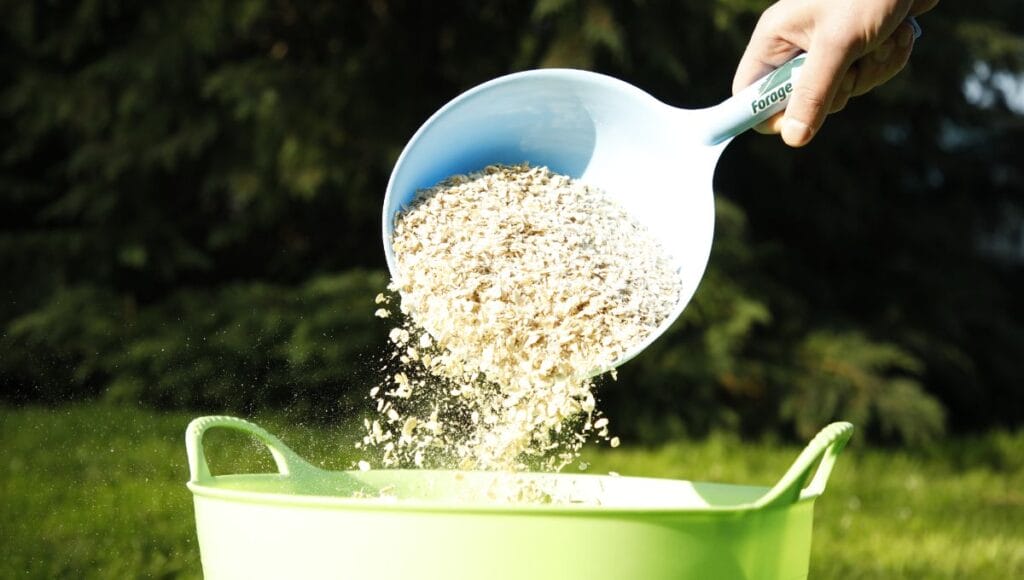
The Nutritional Value and Digestible Energy of Oats for Horses
Oats do not by themselves provide a balanced diet and may lead to deficiencies if fed exclusively. However, if oats for horses are fed as part of a balanced diet where the nutritional elements of hay, grass and the other bucket feed are taken into account then this will offset the potential issues with oats.
Oats provide concentrated high-energy, high-phosphorous food for horses. Where phosphorus levels are low in grass or hay horses are eating then the addition of oats to the bucket feed will enable phosphorous levels to be raised in the daily diet. This is particularly important in the diets of both young horses and breeding mares, both of which require high levels of phosphorous to facilitate healthy bone development in the foetus, foal and young horse.
To improve upon the nutritional qualities of traditional oats, plant breeders created varieties of hull-less or naked oats. Despite their name, hulls do shroud the kernel while the plant is maturing, but they are paper-thin and loosely attached, so they readily separate from the remainder of the kernel during harvesting.
In essence, hull-less oats are self-milling. Hull-less oats and dehulled oats are not the same. The hulls of dehulled oats are mechanically removed from the kernel, and this process may leave the kernel damaged and unpalatable. Some varieties of naked oats have been found to have increased levels of other nutrients, most notably protein, fat, and phosphorus.
Traditional oats contain approximately 9-12% protein, while naked, hull-less oats usually check in at 15-20% protein. Differences in the amino acid profiles of each also exist. Naked oats are believed to contain 62% more lysine (0.65% in naked oats and 0.40% in conventional oats) and nearly double the amount of methionine found in conventional oats (0.40% in naked oats and 0.20% in conventional oats).
This is good news for horse owners caring for young growing horses. Lysine and methionine are critical amino acids for proper muscle development and maintenance. A deficiency in either may lead to slow growth or lacklustre performance.
- Naked varieties possess 9-12% fat, considerably more than the approximate 5% found in hulled oats. The additional calories in hull-less oats come from natural oil stored in the kernels. Because the calories are derived from fat and not starch, hull-less oats are less likely to induce digestive disturbances in performance horses. This nutrient density also translates into savings for horse owners because they can ultimately feed fewer oats while fulfilling basic nutritional needs.
- Naked oats typically have more phosphorus than hulled oats. These varieties may contain nearly 30% more phosphorus, which would make them a wise complement to diets composed largely of high-calcium legume forages such as alfalfa or high-calcium hays and grasses.
Some horse owners may be hesitant to feed hull-less oats because they believe the hulls contribute significantly to the fibre intake of horses. Fibre is undoubtedly essential for the proper functioning of the equine digestive tract but this fibre is better provided by hay and grass rather than high levels of hulled cereal as discussed above.
Cereals are fed to elevate the energy content of a diet in instances where a forage-based diet of hay and grass cannot meet calorie demands brought about by work, growth, or reproduction. This is just simply a situation where the horse cannot consume enough hay and grass due to the bulk needed to provide the number of calories needed to provide the energy and weight maintenance. An additional point is that while whole oats do contain significant fibre, it is not the sort easily digested by the horse.
However, very young horses or veterans with teeth problems may have difficulty chewing whole oats or oats with husks, so will not get the full nutritional benefit.ce. An additional point is that while whole oats do contain significant fibre, it is not the sort easily digested by the horse.
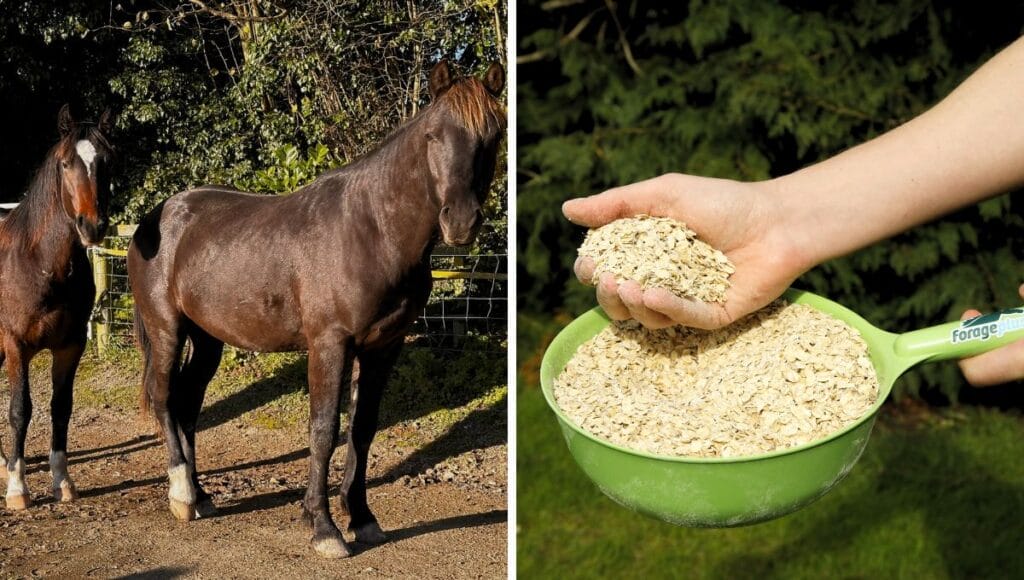
Are oats heating?
Many people avoid feeding oats to their horses because they have found that they cause silly, fizzy and overexcitable behaviour. This can certainly be true if they are fed on their own in large quantities. We have found that if they are fed in proportion to the level of work actually being done, and with a fast soak high fibre provider, oats rarely cause a problem.
Out of all the cereals used here in the UK and Europe, oats have the lowest digestible energy of the cereals. Barley and maize are far more likely to cause digestive upset and fizzy behaviour due to these cereals having a much higher starch content. It is starch that causes the “heating” effect, as it is broken down rapidly into glycogen and then glucose. These sugars are absorbed very quickly, giving the horse a rush of energy.
While most horses are not affected, a few do react by becoming excitable. This is as likely if not more so, to occur with maize and barley (which are both higher in energy) as it is with oats.
We have found however that the practice of feeding a fast soak high fibre provider with the oats as a naked porridge oat form will slow the release of the starch and mean that these oats can be fed safely to most horses and they stay sane with a controlled and measured energy release attitude.
Glucose and Oats
Glucose is the most important fuel for all cells in the horse’s body, so important that the body is equipped to produce it from other substances if dietary levels are low because it is essential. Reducing simple carbohydrate levels below 6% in the total diet will impact horse health. This is liable to happen where people are soaking hay without attention to carbohydrate levels, There is a baseline minimum requirement for glucose without which all cells would die.
Muscle cells do pull glucose from the blood when the horse is exercising but they cannot get a sufficient amount this way. Reliance on glucose in the blood is likely to lead to lethargy and muscle pain. All horse muscles are heavily reliant on glucose stored inside muscle and liver cells in the form of glycogen.
When horses exercise, fat, amino acids and glucose are burned. The relative percentages depend on the intensity of the exercise but can be influenced to some extent by diet and level of fitness. If high-speed and endurance-type work is carried out, the bottom line is that glycogen stores are the limiting factor.
Racing, eventing and endurance are the sports where horses are most likely to face limited exercise capacity related to insufficient glycogen. Horses doing less strenuous work may be just fine with lower levels of glycogen in their muscles. But good-doer horses on a highly controlled low-sugar diet are likely to struggle when glycogen stores are poor.
As you might expect, signs of insufficient glycogen include the inability to continue performing beyond a certain distance/time duration with slow work and the inability to meet speed targets with faster work. A horse that feels like they are running out of petrol in the tank may well need glycogen supplies increasing, as do horses who exhibit pain in their muscles.
When to Feed Oats to Your Horse
The harder a horse works the more likely it is to need a concentrated calorie source and high glycogen supplies to build reserves in the muscles and liver. Even when holding weight and muscling well on hay and grass-only diets, endurance, stamina and speed may suffer without the inclusion of some type of more concentrated carbohydrate source. Feed oats in the daily feed along with a forage-focused horse feed balancer which matches to balance grass and hay.
Using a guide of feeding no more than 1 kg in any one feed and a ratio of 2 parts high fibre fast soak feed to one parts oats is highly successful. For example, if you feed 200 grams of oats then make sure you feed 400 grams of a high-fibre feed such as unmolassed sugar beet and a hay pellet along with the oat measure. You could therefore either feed 200 grams of oats and 400 grams of beet pulp or hay pellets or you could feed 200 grams of oats, 200 grams of sugar beet and 200 grams of hay pellets. The table below helps explain this more clearly.
| Options | Unmolassed Sugar Beet | Hay/Grass Pellet | Oats |
|---|---|---|---|
| 1 | 400 grams | none | 200 grams |
| 2 | none | 400 grams | 200 grams |
| 3 | 200 grams | 200 grams | 200 grams |
Feeding oats directly after work is also beneficial to serve as a quick-release form of glycogen. To fuel muscles and future performance and give your horse more stamina during any exercise try glycogen loading after work. Glycogen is the storage form of glucose which is the energy that fuels all cells in the body. Glycogen is stored in both the muscles and the liver. Supply levels can be increased by refuelling the body after work.
Lethargy, poor stamina and poor muscle development may all be seen when a horse is low in protein, sodium, glycogen or all three. It pays then to be on the ball with minerals and vitamins to power the chemical and enzymatic processes in the body which use the glycogen and the protein to build and repair body structures by using a horse feed balancer matched to grass and hay, but to also supply a form of quick and short release carbohydrate after exercise to replace and build glycogen reserves. Naked rolled oats, and porridge oats for horses, can be part of this glycogen-loading approach.
How many oats to feed to a horse each day
To support glycogen loading and protein levels then follow this protocol at the same time as providing minerals and vitamins matched to grass and hay:
- Feed a small feed after each work period. We find unmolassed sugar beet and oats with 50 grams of Essential Amino Acids after work – 100 grams of beet pulp and 50-100 grams of flaked oats (porridge) is perfect for an average 500 kg horse – this will replenish glycogen supplies in the liver and muscles with the beet pulp being a slow-release and the oats a fast release but low glycaemic carbohydrate source. Feed this directly after work as this is when the body is most hungry to replenish the glycogen supplies and it will be done most efficiently.
- If you feel your horse needs a larger feed then stick to a 50:50 mixture of beet pulp to oats and increase up to 300 grams of each.
- Alternatively, you could use Pea Protein or Topline Plus instead of Essential Amino Acids. Essential Amino Acids after work at 50 grams and also 100 grams of pea protein in the daily bucket feed with the balancer will give a great range of the essential amino acids. Whether you do one or both is down to how much exercise your horse does and the possible levels of protein in the hay and grass eaten. If you know, through analysis, that the hay fed is low in protein for moderate work, then include 100 grams of Pea Protein or Topline Plus each day in the bucket feed. Horses seem to love the taste which is a bonus.
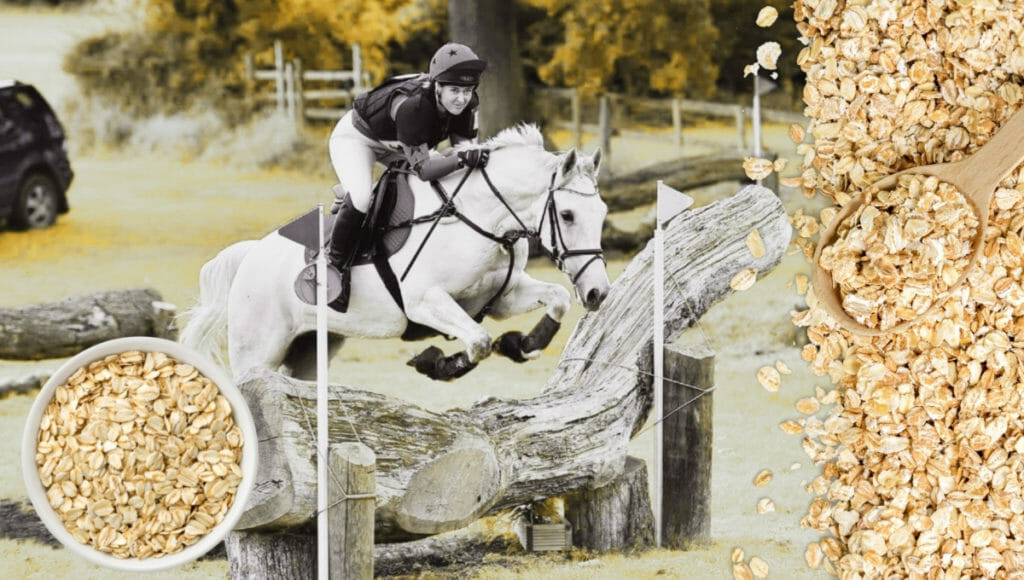
Can you feed oats to horses who are prone to laminitis?
Horses and ponies who are prone to laminitis are very sensitive to starch and simple sugar levels in the daily food eaten. For this reason, extreme care should be taken when using oats as part of their daily diet. Horses who are overweight and need strict calorie control to manage weight loss should not be fed oats. Horses that are in acute laminitis should not be fed oats. Horses with poorly controlled insulin resistance resulting in high insulin levels should not be fed oats. However, where a horse or pony has returned to regular exercise which moves from light into the moderate category then the carbohydrate level of a low sugar and starch laminitis management diet may become too restrictive.
Where a horse ‘hits the wall’ and ‘runs out of petrol’ at a certain level of exercise and or fatigues easily and does not seem to be getting more conditioned with exercise then a higher level of glycogen supply may well be needed.
When a horse exercises, cortisol is released. The cortisol enables the liver to break down glycogen, the storage form of glucose and release it into the bloodstream to help meet the rising energy demands of the muscle. The muscle’s uptake of glucose is not dependent upon insulin during exercise. Circulating blood glucose is not sufficient to meet all the energy demands, so muscle relies on its glycogen stores to generate glucose. When this system is working well glucose levels stay steady during exercise. After exercise glucose will rise for a while and then return to normal.
Insulin resistance limits the entry of glucose into the live rand muscle which then also limits the ability of these tissues to store the much-needed glycogen. This means when a laminitis-prone horse goes back into an exercise programme it can struggle to have enough reserves to maintain the level of energy and stamina needed for exercise on low sugar, low-starch, hay-orientated, high-fibre diet.
The solution is to feed more concentrated carbohydrates with high digestible energy but time this feeding when the body is most hungry to replenish glycogen reserves and not exceed the horse’s capacity to handle simple carbs as follows:
- Feed a small feed within one hour of stopping exercise and a second one in the next hour. We find unmolassed sugar beet pulp and flaked oats with 50 grams of Essential Amino Acids after work – 100 grams of beet pulp and 50-100 grams of naked oats (porridge) is perfect for an average 500 kg horse.
- Stick to your regular low sugar/starch bucket feed and hay otherwise.
- If you feel your horse needs a larger feed then stick to a 50:50 mixture of beet pulp to oats and increase up to 200 grams of each.
You may also find it beneficial where a good-doer, laminitis-prone horse is on restricted hay content to boost protein supplies especially when the horse is upping the level of work from light to moderate. You can use Pea Protein or Topline Plus each day at 100 grams per 500 kg horse to improve amino acid and protein supplies.
Always feed oats with a slow-release carbohydrate (beet pulp is the best). The results of this study (Vervuert et al., 2003) indicate that glucose and insulin responses are not clearly altered by different oats forms but they tended to be lower in thermally treated oats when compared to untreated or finely ground oats. One horse is on restricted hay content to boost protein supplies especially when the horse is upping the level of work from light to moderate. You can use Pea Protein or Topline Plus each day at 100 grams per 500 kg horse to improve amino acid and protein supplies.
Best Practices for Feeding Oats
To get the most nutritional benefit from oats, it’s essential to follow some best practices when feeding them to your horse. Here are some tips:
- Choose the Right Type of Oats: There are several types of oats available, including whole oats, rolled oats, crushed oats, and naked oats. Each type has its own benefits and suitability depending on your horse’s needs. For example, flaked oats are the easiest to digest, making them ideal for older horses or those with dental issues.
- Feed in Moderation: Oats should be fed in moderation as part of a balanced diet. Overfeeding oats can lead to digestive issues and other health problems. It’s important to measure the amount of oats you feed and adjust based on your horse’s activity level and overall diet.
- Mix with Other Feeds: Oats can be mixed with other feeds like hay or grass pellets, or beet pulp, to provide a balanced and nutritious diet. Combining oats with high-fibre feeds like beet pulp helps slow down the release of energy, meaning they will not make your horse hot and unmanageable.
- Provide Adequate Water: Make sure your horse has access to plenty of fresh water when feeding oats or any feed. Adequate hydration is crucial for digestion and helps prevent issues like impaction colic. Water also aids in the absorption of nutrients from the oats and other feeds.
- Provide adequate salt to cover sodium and chloride levels for maintenance and sweat losses: Poor sodium levels in the diet affect water consumption. For more information about covering electrolytes in horse diets, this article offers comprehensive advice.
- Consult with Forageplus: If you’re unsure about how to feed oats to your horse or have specific dietary needs, consult with our specialist, forage focused nutritionists for personalised advice. We will help you create a balanced diet, matched to grass and hay, that meets all of your horse’s nutritional requirements.
By following these best practices and understanding the benefits and uses of oats for horses, you can provide your horse with a nutritious and balanced diet that supports their overall health and well-being.
Summary
The bottom line is that while cereal-free, high-forage diets make sense for some horses, cereal in the form of oats has a place in the diets of horses in exercise or growing youngsters and breeding mares. A careful and measured approach that starts with grass and hay, matches minerals and vitamins and adds appropriate levels of carbohydrate at the right time and in the right amount, in the form of oats mixed with a fast soak fibre provider, can be a game-changer for performance, stamina and all-round horse health.
Interested in finding out the nutritional value of your own grass or hay? Check out our range of forage analysis services by clicking here.
Check out our winter performance horse feed balancer here.

